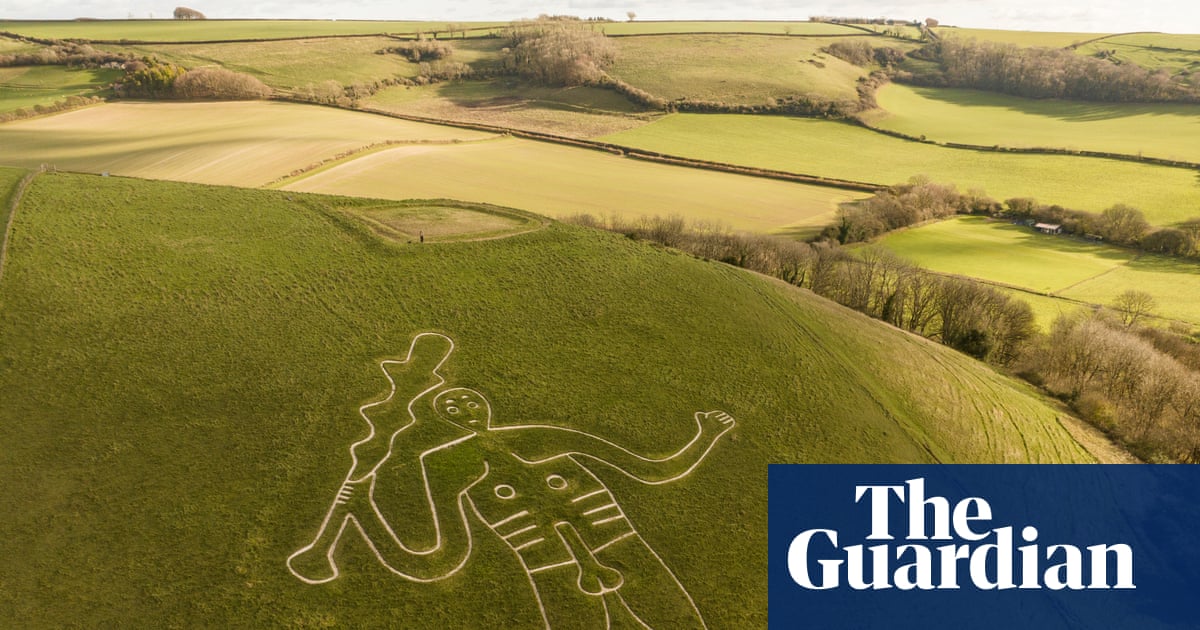Brodi, the slow loris, who had to have an amputation after he was electrocuted on an uninsulated power line but is recovering well at International Animal Rescue in Indonesia. Unfortunately, uninsulated power lines are a new threat to the lives of slow loris
Photograph: Rendi Afandi/YIARI and Partner International Animal Rescue.
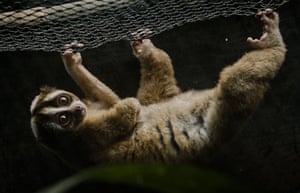
A dolphin breaches the sea off the Devon coast, UK
Photograph: Robin Morrison/SWNS

A badly wounded jaguar rests after being rescued from the Negro River near Manaus, Brazil. The feline was found swimming, disoriented and weak, by a task force of the Environmental Police Battalion. Examinations revealed the animal had oedema in its eyes and ears and had been shot with a hunting rifle, with more than 30 pellets hitting its face and skull, causing it to lose several teeth
Photograph: Raphael Alves/EPA
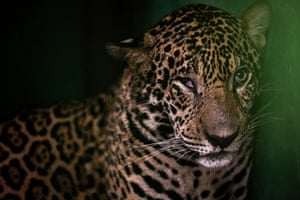
A butterfly known as the blue-topped satyr. It was found in a Brazilian eucalyptus plantation, where scientists observed butterflies were less colourful than in native forests. The insects’ brilliant hues evolved in lush ecosystems to help them survive; now they are becoming more muted to adapt to degraded landscapes
Photograph: Roberto García-Roa
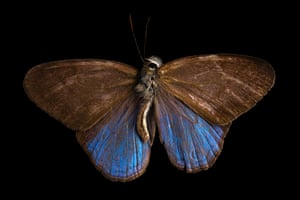
Fluffy muscovy ducklings swim together in a pond at Lake Eola Park in Orlando, Florida, US
Photograph: Ronen Tivony/NurPhoto/Shutterstock
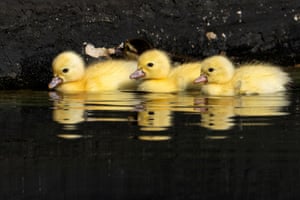
This tiny poison dart frog is a new discovery: it has been given the name Ranitomeya hwata by researchers who identified it as a distinct species in the Amazon region of western Brazil. Just 15mm long, the frogs live exclusively on a single type of plant: “The most noteworthy thing about this species is how much it really loves living in Guadua bamboo,” said one of the scientists involved
Photograph: Juan Carlos Chaparro/Peru’s Biodiversity Museum/AFP/Getty Images
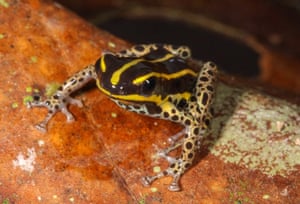
A veiled chameleon crawls on leaves in Sanaa, Yemen. The reptile, which gets its name from the casque on its head, is native to the Arabian Peninsula in Yemen and Saudi Arabia
Photograph: Yahya Arhab/EPA
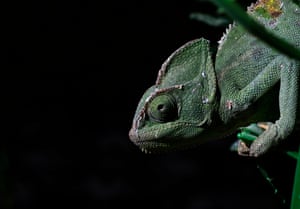
One of 19 pine martens that have been released in Exmoor national park, UK, in secret locations. The slinky mustelid has not lived in the area for more than a century – at least, not officially, though there have been sightings. This release, seven years in the planning, follows a successful release of 15 pine martens on Dartmoor last year
Photograph: Two Moors Pine Marten Project/PA
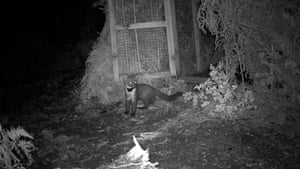
An American bison at Yellowstone national park, Wyoming, US
Photograph: Jason Whitman/NurPhoto/Shutterstock
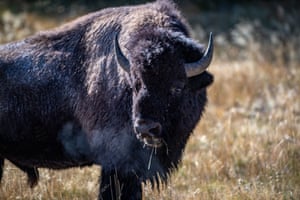
A hoary marmot – sometimes called a whistle pig, on account of its high-pitched alarm call – pokes its head out in Mount Rainier national park, Washington, US
Photograph: M Scott Brauer/Zuma Press Wire/Shutterstock
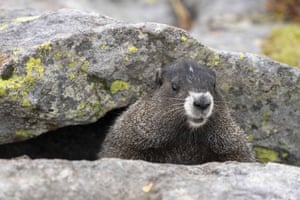
A stag bellows beside does in Richmond Park, London, UK. During deer rutting season, the males use their roar and antlers to scare rivals away from the females
Photograph: Neil Hall/EPA
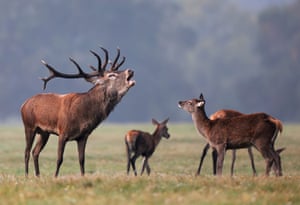
Rescued cheetah cubs in cages in Berbera, Somaliland. The government has rescued 11 young cheetahs from wildlife traffickers in what conservationists are calling “one of the largest confiscations of the species to date”. The badly malnourished cubs were found stuffed inside bags being transported in a small dhow off the Berbera coast, and were later transferred to a rescue facility run by the Cheetah Conservation Fund
Photograph: AP

Hitting the mall … a bull elk joins other elk in wandering through the parking lot of a shopping centre in Estes Park, near the Rocky Mountain national park, Colorado, US
Photograph: David Zalubowski/AP
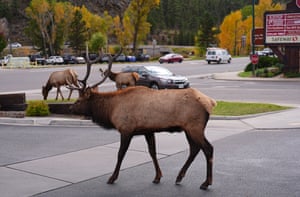
A stunning red goshawk in flight at Newhaven wildlife sanctuary, NT, Australia. The mysterious bird, which exists nowhere else on Earth, is disappearing from Australia’s landscape as a result of climate change and habitat loss
Photograph: Tim Henderson/Australian Wildlife Conservancy
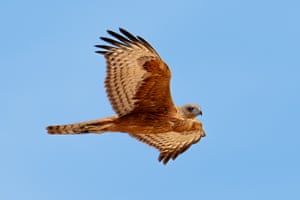
Making a splash … a male Sumatran elephant runs near palm oil plantations in Peunaron, east Aceh, Indonesia
Photograph: Chaideer Mahyuddin/AFP/Getty Images
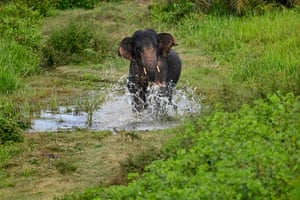
A mute swan floats in the wetlands of Helix park, Falkirk, Scotland, surrounded by green algae
Photograph: Garry F McHarg/Shutterstock
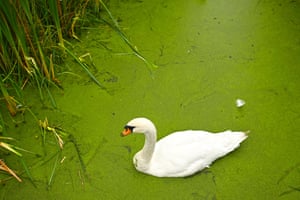
A red squirrel roams in Sarikamis, Kars, Turkey. As temperatures have risen above seasonal norms, wild animals have left their burrows and spent more time searching for food
Photograph: Anadolu/Getty Images
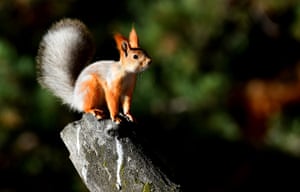
A one-horned rhinoceros grazes at Kaziranga national park, Assam, India
Photograph: Anuwar Hazarika/NurPhoto/Shutterstock
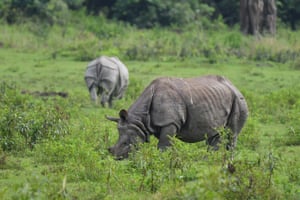
Say hello to the bumpy snailfish – a newly discovered species of deep-sea creature, photographed by a remotely operated vehicle more than 3km underwater off the coast of California. With its big blue eyes and winning smile, the little snailfish was an instant online hit. Asked to comment, the lead researcher told the New York Times that the newcomer was “pretty adorable”
Photograph: MBARI
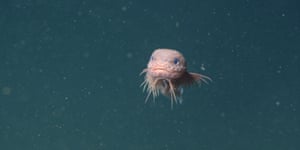

.png) 1 month ago
42
1 month ago
42


